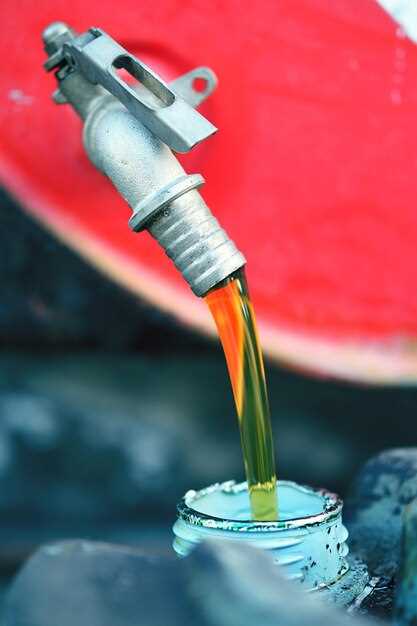
When it comes to selling your vehicle, ensuring that it is in optimal condition is crucial not only for achieving the best price but also for making a good impression on potential buyers. One of the most important aspects of vehicle maintenance is checking the various fluids that are essential for its operation. Neglecting to review these fluids can lead to unforeseen problems that may arise during inspections or test drives, ultimately affecting your sale.
Fluids in your vehicle play a vital role in its performance and longevity. They are responsible for lubricating components, regulating temperature, and ensuring that systems operate smoothly. Before listing your vehicle for sale, it is essential to conduct a thorough check of key fluids such as oil, coolant, transmission fluid, brake fluid, and power steering fluid. Each of these plays a significant role in maintaining the performance of your vehicle and can help prevent any last-minute repairs or issues that could hinder the selling process.
In this article, we will delve into the specific fluids you should examine, the signs that indicate they may need to be changed, and tips for maintaining them properly. By being proactive about these checks, you can demonstrate to potential buyers that you have taken great care of your vehicle, which can not only enhance its value but also ease the negotiation process.
Engine Oil: Signs of Degradation and Proper Levels

Engine oil plays a crucial role in ensuring the smooth operation of your vehicle’s engine. Regular checks of this fluid are essential before selling your vehicle, as its condition can significantly impact performance and value.
Signs of Degradation: Over time, engine oil can degrade due to exposure to heat, contaminants, and engine wear. One of the first signs of degradation is a change in color; fresh engine oil is typically amber, while degraded oil turns dark and may appear gritty. Additionally, if the oil smells burnt, it indicates overheating and the need for replacement.
Another indicator is the oil consistency. If oil feels thick or sludgy, it may have absorbed impurities and should be changed. Checking for metal particles or debris on the dipstick is also essential as these contaminants can indicate engine wear.
Proper Levels: Maintaining the correct oil level is equally important. Use the dipstick to check the oil level; it should ideally sit between the minimum and maximum marks. If it falls below the minimum mark, it’s essential to top it up to prevent engine damage. Regularly checking levels helps detect leaks or excessive oil consumption, which can signal underlying issues.
In summary, monitoring engine oil for signs of degradation and ensuring proper levels are vital steps before selling your vehicle. Taking these precautions not only enhances performance but also improves the vehicle’s resale value.
Transmission Fluid: How to Assess and Maintain Quality
Transmission fluid is essential for the proper functioning of your vehicle’s transmission system. It serves multiple crucial purposes, including lubrication, cooling, and providing the necessary hydraulic pressure for shifting gears. To ensure that your vehicle operates smoothly, it’s vital to assess and maintain the quality of this fluid regularly.
Assessing Transmission Fluid Quality
Start by checking the fluid level using the dipstick, which is generally located near the back of the engine bay. Make sure your engine is warm and running while checking, as this gives you a more accurate reading. The fluid level should be within the designated marks on the dipstick.
Next, observe the color and smell of the fluid. Healthy transmission fluid typically appears bright red or pink. If the fluid is dark brown or has a burnt smell, this indicates that it may be degraded and in need of replacement. Additionally, examine the fluid for particles or debris that could suggest wear and tear within the transmission.
Maintaining Transmission Fluid Quality
To maintain the quality of your transmission fluid, adhere to the manufacturer’s recommended service intervals for fluid changes, which can typically be found in the owner’s manual. Regular fluid changes help remove contaminants and ensure the fluid is always functioning optimally.
Furthermore, consider conducting periodic inspections of the transmission seals and gaskets. Leaks can lead to low fluid levels, prompting the need for immediate intervention. Addressing any leaks as soon as they are detected can prevent further damage to the transmission system.
Conclusion
Regularly assessing and maintaining the quality of your transmission fluid is essential for prolonging the life of your vehicle’s transmission and ensuring its smooth operation. Make routine checks a part of your vehicle maintenance to avoid costly repairs in the future.
Coolant System: Ensuring Optimal Performance Before Sale

Before selling your vehicle, it’s essential to check the coolant system to ensure optimal performance and instill confidence in potential buyers. The coolant system is crucial for regulating engine temperature, preventing overheating, and maintaining overall vehicle functionality.
Start by inspecting the coolant level in the reservoir. Low coolant levels can indicate leaks or inefficient performance, which could turn away potential buyers. If the level is below the recommended mark, top it up with the appropriate type of coolant, as specified in the vehicle’s manual.
Next, examine the condition of the coolant itself. Old or contaminated coolant can lead to corrosion and system inefficiency. Flush and replace the coolant if it appears rusty, cloudy, or has a foul odor. This maintenance step not only improves engine performance but also enhances the vehicle’s appeal to buyers.
Additionally, check the hoses and connections within the coolant system. Look for any signs of wear, cracks, or leaks. Damaged hoses can cause coolant loss and lead to overheating, raising concerns for potential buyers about the reliability of the vehicle. Replacing any worn components is a simple yet effective way to boost confidence in your vehicle’s condition.
Finally, ensure that the radiator and thermostat are functioning properly. A well-maintained radiator and thermostat ensure efficient heat exchange and prevent engine overheating. Regular maintenance in this area can be a strong selling point, demonstrating that the vehicle has been well cared for.
Addressing the coolant system before selling your vehicle is not just about aesthetics; it’s about providing peace of mind to buyers. By ensuring that the coolant system is in optimal condition, you can enhance your vehicle’s marketability and increase its resale value.



